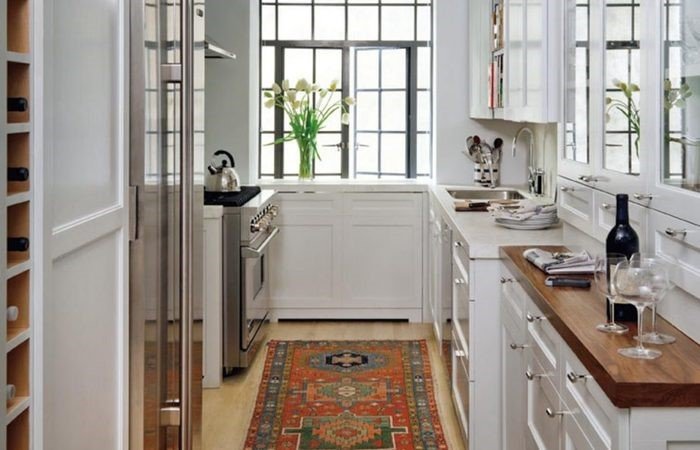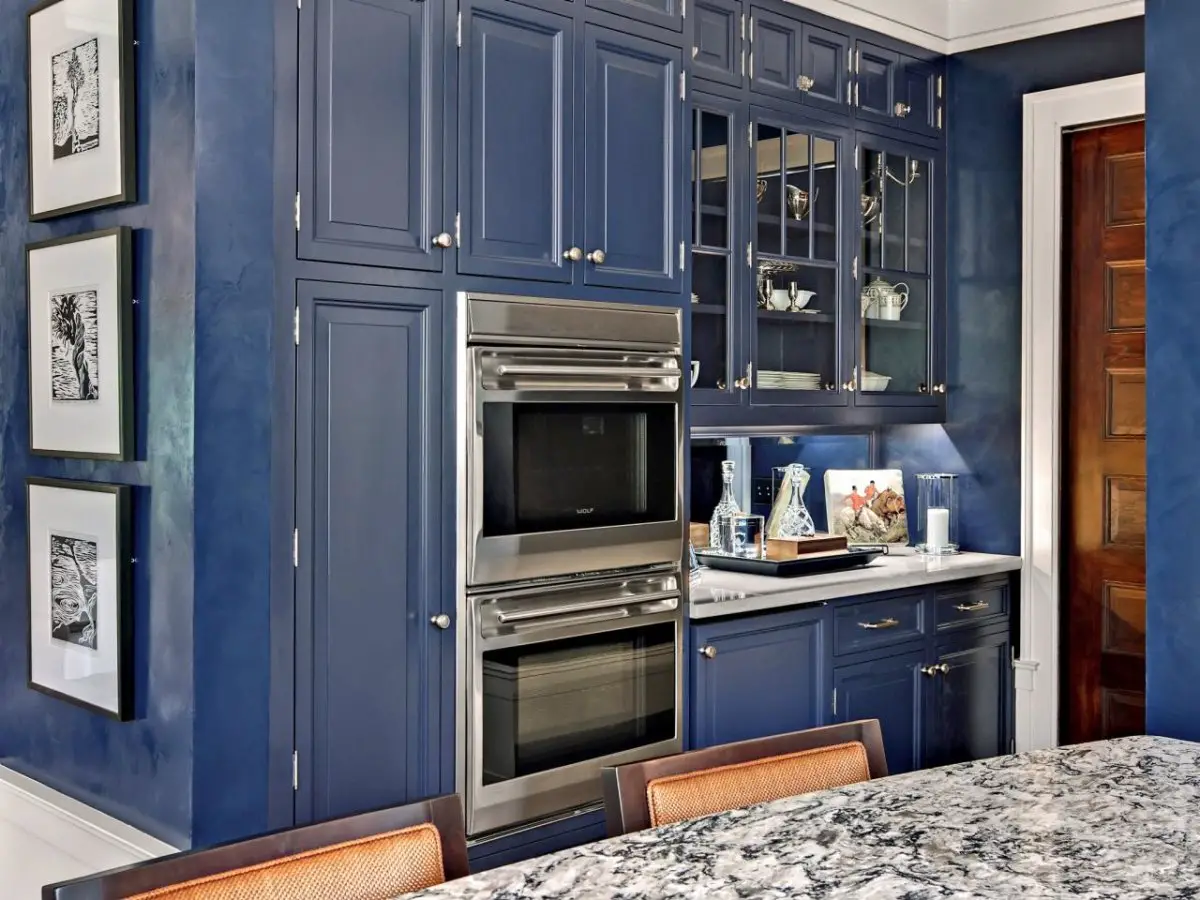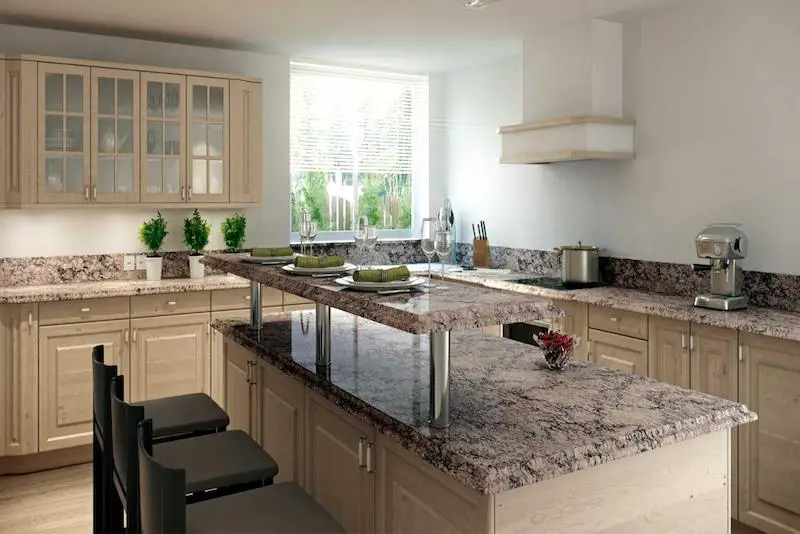Want to upgrade your kitchen with eco-friendly flooring?Making the right choice is crucial. From bamboo and cork to reclaimed wood and linoleum, there are numerous environmentally friendly materials available. But which one suits your lifestyle and budget best? In this guide, we’ll delve into the top sustainable flooring choices for kitchens, considering durability, maintenance, and of course, sustainability. Whether you’re a culinary enthusiast or simply seeking an aesthetic revamp, finding the perfect balance between style, renewable sources, and sustainability is key.
Stay tuned as we explore the pros and cons of each option while keeping practicality in mind. Let’s create a kitchen space that not only looks fantastic but also contributes positively to our planet’s well-being.
Key Takeaways
- Choose sustainable kitchen flooring options like bamboo, cork, or linoleum to reduce environmental impact and promote eco-friendly living.
- Prioritize non-toxic flooring materials such as natural linoleum, cork, or FSC-certified wood to maintain a healthy indoor environment for your family.
- Opt for durable and eco-friendly floors like bamboo or reclaimed wood to ensure longevity and minimize the need for replacements.
- Consider using recycled materials such as glass tiles or reclaimed wood for a unique and environmentally conscious flooring solution.
- Explore renewable flooring solutions like bamboo or cork, which are rapidly renewable resources, to support sustainable practices.
- Enjoy the benefits of green kitchen floors, including improved indoor air quality, reduced environmental footprint, and a stylish, modern look for your home.
Sustainable Kitchen Flooring Overview
Eco-Friendly Materials
When choosing sustainable kitchen flooring, there are several eco-friendly materials to consider. For instance, recycled glass tiles are an excellent sustainable option that repurposes discarded glass into beautiful and durable flooring. linoleum made from natural materials like linseed oil, cork dust, and wood flour is a great choice for an environmentally friendly kitchen floor. Moreover, considering reclaimed wood as a green flooring choice not only adds warmth and character to the kitchen but also contributes to sustainable living by giving new life to old wood.
These options exemplify the importance of utilizing renewable or recycled resources, carpets, in creating a more sustainable environment within the home.
Benefits of Sustainable Flooring
Opting for sustainable kitchen flooring offers various benefits. Firstly, it significantly reduces the environmental impact by minimizing resource depletion and promoting responsible manufacturing processes. Furthermore, sustainable flooring, including carpets, promotes healthier indoor air quality by using non-toxic materials that do not emit harmful chemicals into the air over time. Lastly, while initial costs may be slightly higher than traditional options, long-term savings are achieved through reduced maintenance needs and longevity of these eco-friendly choices.
The advantages of choosing sustainable flooring extend beyond personal convenience; they contribute positively to both individual well-being and global sustainability efforts.
Factors for Eco-Friendly Choices
When making decisions about kitchen flooring, it’s essential to consider specific factors that contribute to eco-friendliness. Firstly, evaluating the durability and recyclability of materials is crucial in determining their long-term environmental impact. Secondly, looking for certifications such as FSC (Forest Stewardship Council) or Green Seal ensures that products meet recognized environmental standards. Finally, assessing the energy efficiency of the manufacturing process provides insight into how much energy is consumed during production.
Exploring Non-Toxic Flooring Options
Green Flooring
It’s essential to understand the concept of green flooring. This type of flooring aims to minimize harm to the environment by utilizing renewable, recycled, or reclaimed materials. The production process also prioritizes sustainability, making it an eco-friendly choice for your kitchen.
Green flooring options include materials like bamboo, cork, and reclaimed wood. These materials are considered environmentally friendly due to their renewability and low environmental impact. For instance, bamboo is a fast-growing plant that can be harvested without killing the entire plant, making it a sustainable choice for toxic floors.
Health Impact
The health impact of different flooring options is another crucial factor to consider when choosing sustainable kitchen flooring. Some conventional flooring materials emit harmful volatile organic compounds (VOCs), which can contribute to indoor air pollution and pose health risks. Opting for natural materials such as cork and bamboo can promote better indoor air quality while reducing exposure to harmful chemicals emitted by certain flooring option.
Choosing low-emission or VOC-free friendly flooring options ensures a healthier home environment for you and your family. These non-toxic alternatives contribute positively to overall indoor air quality by minimizing the release of potentially harmful substances into your living space.
Durable and Eco-Friendly Floors
Longevity and Sustainability
When considering sustainable kitchen flooring options, longevity plays a crucial role in contributing to environmental sustainability. Materials like bamboo are not only durable but also renewable, making them an excellent choice for eco-friendly flooring. By opting for sustainable materials with a longer lifespan, homeowners can significantly reduce the need for frequent replacements, thus minimizing their environmental impact. Sustainable flooring options offer lasting performance, making them a perfect fit for environmentally conscious individuals looking to create a long-term positive impact.
Moreover, these durable materials contribute to the reduction of waste generated from constant floor replacements. For instance, bamboo floors have been known to last as long as 25 years with proper care and maintenance. This extended lifespan aligns perfectly with the principles of sustainability by reducing the consumption of resources over time.
Maintenance Considerations
One key advantage of sustainable kitchen flooring is its easy-to-clean surfaces that minimize the need for harsh chemicals. Unlike traditional carpets or non-eco-friendly tiles, sustainable options such as natural linoleum or concrete do not require extensive chemical-laden cleaning solutions. This characteristic not only promotes a healthier indoor environment but also reduces the ecological footprint associated with cleaning products.
Proper maintenance is essential in extending the life of sustainable flooring materials while ensuring they retain their eco-friendly attributes throughout their lifespan. Homeowners can utilize simple cleaning methods using mild detergents and microfiber mops to keep these floors in pristine condition without compromising their sustainability benefits.
However, it’s important to note that some eco-friendly options may require specialized care due to their unique properties. For example, natural linoleum might need periodic resealing to maintain its durability and water resistance properties over time.
Recycled and Reclaimed Materials
Types of Recycled Flooring
Recycled rubber flooring is a resilient and eco-friendly option for your kitchen. It’s made from old tires, providing a cushioned surface that’s easy on the joints. This sustainable choice also helps to reduce waste in landfills, as it gives new life to discarded rubber materials.
When considering sustainable kitchen flooring options, recycled metal tiles offer a unique and environmentally friendly alternative. These tiles are crafted from reclaimed metal, such as aluminum or steel, making them durable and stylish. By using recycled metals, you’re contributing to the conservation of natural resources while adding an industrial touch to your kitchen.
Another excellent choice for sustainable flooring is recycled plastic composite tiles. These tiles are not only durable but also contribute to environmental preservation by reducing plastic waste. They provide a long-lasting solution for your kitchen floor while promoting sustainability through the use of recycled materials.
Reclaimed Wood Benefits
Opting for reclaimed wood offers several benefits. Firstly, it adds character and history to your home environment by incorporating materials with a previous life into your space. Each piece of reclaimed wood tells its own unique story, bringing depth and personality to your kitchen floor.
Furthermore, choosing reclaimed wood reduces the demand for new timber products by repurposing existing material. This practice contributes significantly to forest preservation by lessening the need for fresh lumber sourced from trees. By utilizing reclaimed wood in your kitchen flooring, you actively participate in sustainability efforts aimed at protecting our forests and natural habitats.
In addition to preserving forests, using reclaimed wood supports sustainability by preventing perfectly good material from going unused or ending up in landfills where they would otherwise contribute negatively towards environmental impact.
Renewable Flooring Solutions
Bamboo and Cork Options
Bamboo and cork are renewable sources that make excellent choices for sustainable kitchen flooring. Bamboo is a fast-growing grass, making it highly renewable and environmentally friendly. It’s also incredibly durable, making it suitable for high-traffic areas like the kitchen. Similarly, cork is harvested from the bark of cork oak trees without harming them, allowing for the continuous growth of new bark.
Both bamboo and cork flooring options offer natural beauty while being tough enough to withstand daily wear and tear in a busy kitchen. They are sustainable choices due to their ability to be replenished relatively quickly compared to traditional hardwoods.
For instance:
- Bamboo can be harvested in just 3-5 years, while hardwood trees can take decades to mature.
- Cork oak trees’ bark regenerates every 9-12 years without requiring tree cutting or removal.
Renewable Material Advantages
When looking for the right flooring, consider materials made from renewable resources such as natural linoleum, rubber, or sustainable carpeting options. Natural linoleum is produced using renewable raw materials like linseed oil, wood flour, pine rosin, and jute backing. This makes it an eco-friendly alternative to vinyl flooring which is made from synthetic materials derived from non-renewable sources.
Similarly, rubber flooring is derived from natural rubber latex obtained from rubber trees through a process called tapping. Sustainable carpeting uses renewable fibers like wool or jute instead of synthetic fibers derived from petroleum-based products.
Benefits of Green Kitchen Floors
Environmental Impact
The environmental impact is a crucial factor to consider. Traditional flooring production can significantly harm the environment, contributing to carbon emissions and waste generation. In contrast, sustainable flooring helps reduce the carbon footprint and minimizes waste. For instance, materials like bamboo and cork are renewable resources that promote conservation of natural resources.
Sustainable flooring options often use recycled or reclaimed materials, further minimizing their environmental impact. By reusing materials that would otherwise end up in landfills, these floors contribute to a more sustainable approach to resource management.
The energy efficiency aspect of green kitchen floors is another essential point to consider. Eco-friendly manufacturing processes play a vital role in reducing energy consumption associated with producing traditional flooring materials. This reduction in energy usage directly contributes to lowering the overall environmental impact of sustainable flooring options.
Sustainable flooring also tends to require less energy for its production compared to traditional alternatives. For example, linoleum is made from natural raw materials such as linseed oil and wood flour; this results in lower energy requirements during manufacturing when compared with synthetic vinyl alternatives.
Energy-efficient production processes not only benefit the environment but also contribute positively towards achieving overall sustainability goals within the construction industry.
Choosing Healthy Green Floors
Certifications and Standards
When choosing sustainable kitchen flooring options, it’s crucial to consider certifications such as FloorScore or Cradle to Cradle. These green certifications ensure that products meet specific environmental criteria, assuring you of their eco-friendliness. By meeting industry standards, the flooring is guaranteed to be environmentally sustainable.
Opting for a flooring with these certifications means you’re making a positive impact on the environment. For instance, if you select a bamboo floor with FloorScore certification, you can rest assured that it has been manufactured sustainably and meets strict indoor air quality standards. This not only benefits your home but also contributes to overall environmental conservation efforts.
Indoor Air Quality
One of the key advantages of opting for sustainable kitchen flooring options is the significant improvement in indoor air quality they offer. Choosing low-VOC or VOC-free materials ensures that harmful emissions are minimized, thus reducing health risks associated with poor indoor air quality.
Installation of Sustainable Flooring
Preparing for Installation
Proper subfloor preparation is essential when installing sustainable kitchen flooring options. This involves ensuring that the subfloor is clean, level, and dry to prevent any issues with the new flooring material. For instance, if you’re opting for bamboo or cork, it’s crucial to let these natural materials acclimate to your home’s environment before installation. This helps prevent warping or other problems after the floors are installed. Hiring professionals who specialize in installing eco-friendly floors can ensure that these critical steps are carried out correctly.
Professionals experienced in sustainable flooring installation understand the unique requirements of eco-friendly materials and can address any challenges that may arise during the process. Their expertise ensures a smoother and more successful installation, minimizing potential issues down the line.
Professional vs DIY
When considering sustainable flooring options, it’s important to weigh the advantages of professional installation versus a DIY approach based on the specific type of eco-friendly floor you choose. Some sustainable flooring materials, such as reclaimed wood or certain types of tiles, may require specialized skills and tools that only professionals possess.
On the other hand, there are eco-friendly floors like click-lock bamboo planks or interlocking cork tiles that lend themselves well to DIY installation projects. These types of floors are designed for easier installation without requiring extensive professional expertise.
While DIY installations offer cost savings, hiring professionals ensures proper techniques and precision during the process. Professionals have experience working with various sustainable materials and can provide valuable insights into maintenance practices post-installation.
Enhancing Your Home with Eco-Friendly Floors
Aesthetic Appeal
There’s no shortage of choices that offer both environmental benefits and aesthetic appeal. From a wide range of styles, colors, and textures, homeowners can find the perfect sustainable flooring to complement their kitchen decor. For a unique, rustic look, reclaimed wood stands out as an excellent choice. Its weathered appearance adds character and warmth to the kitchen space while also reducing the demand for new timber.
bamboo and cork are popular sustainable options known for their modern and stylish aesthetics. Bamboo flooring offers a sleek, contemporary look with its clean lines and natural variation in color tones. On the other hand, cork presents a distinctive texture with its softness underfoot and earthy hues. Both materials not only elevate the visual appeal of a kitchen but also contribute to eco-friendly living by being renewable resources.
Resale Value Impact
Investing in sustainable kitchen floors doesn’t just benefit the environment; it can significantly impact your home’s resale value as well. More environmentally conscious buyers are increasingly seeking homes with eco-friendly features such as sustainable flooring options. By choosing these types of floors for your kitchen, you’re likely to attract potential buyers who appreciate sustainability efforts in home design.
Moreover, opting for sustainable flooring demonstrates your commitment to environmentally responsible living practices which can positively influence property value. Homes equipped with green features tend to command higher prices on the market due to their lower environmental impact and energy-efficient qualities. Therefore, by installing sustainable kitchen floors, you’re not only enhancing your living space but also making a smart investment that pays off when it comes time to sell your home.
Closing Thoughts
You’ve learned about a variety of sustainable and eco-friendly flooring options for your kitchen. By choosing non-toxic, durable, and renewable materials, you can create a healthier environment for your family while reducing your carbon footprint. Whether it’s recycled wood, bamboo, cork, or linoleum, each option offers unique benefits that align with your green living goals.
Now it’s time to take the next step. Consider your priorities – durability, cost, or environmental impact – and explore the flooring options that best suit your needs. Take action today to transform your kitchen into a sustainable and stylish space that reflects your commitment to a greener lifestyle.
Frequently Asked Questions
What are the benefits of choosing sustainable kitchen flooring?
Choosing sustainable kitchen flooring offers various benefits such as reducing environmental impact, improving indoor air quality, and promoting a healthier living environment for you and your family. It can enhance the aesthetic appeal of your home while increasing its overall value.
How do I know if a flooring option is non-toxic?
To ensure that a flooring option is non-toxic, look for certifications from reputable organizations like FloorScore or GreenGuard. These certifications guarantee that the materials used in the flooring have low chemical emissions, making them safe for indoor use and contributing to better air quality in your home.
What are some examples of renewable flooring solutions for kitchens?
Renewable flooring solutions for kitchens include bamboo, cork, and linoleum. These materials are derived from natural and rapidly renewable resources, making them environmentally friendly choices. They offer durability and come in various styles to suit different design preferences.
How can I install sustainable kitchen flooring in my home?
Installing sustainable kitchen flooring involves proper preparation of the subfloor, using eco-friendly adhesives if necessary, and following manufacturer guidelines. It’s recommended to hire professional installers with experience in working with sustainable materials to ensure a successful installation process that maximizes the longevity of your new floors.
Are there any drawbacks to using recycled or reclaimed materials for kitchen floors?
While using recycled or reclaimed materials contributes positively to sustainability efforts by reducing waste sent to landfills, these options may have limited availability and require careful selection due to variations in quality. They might involve higher maintenance compared to other types of eco-friendly floors.






